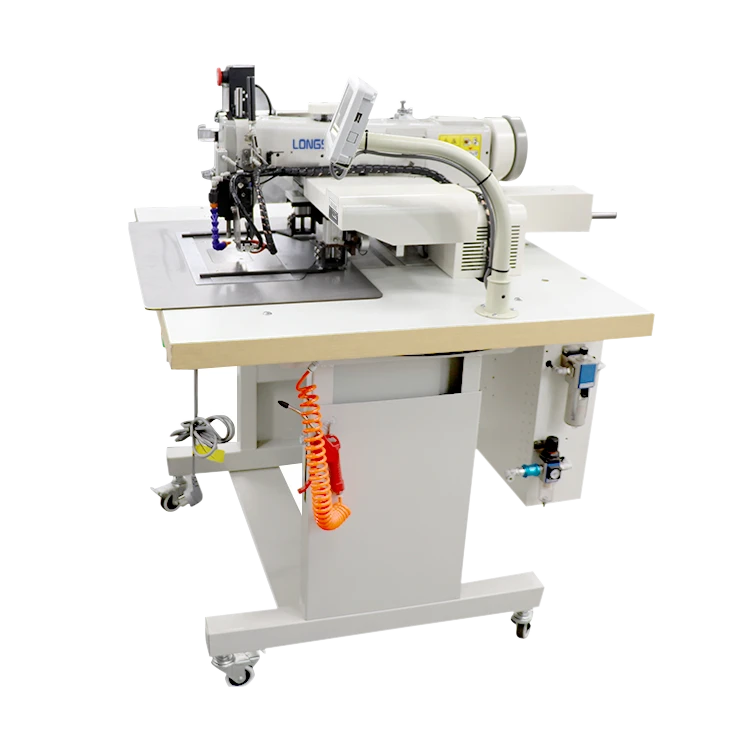computerized pattern sewing machine
The Evolution and Impact of Computerized Pattern Sewing Machines
In the realm of textile and fashion design, the advent of computerized pattern sewing machines has marked a significant turning point. These machines blend traditional sewing techniques with cutting-edge technology, bringing about unprecedented efficiency, precision, and creativity in the sewing process.
At the heart of the evolution of sewing machines lies the introduction of computerized systems. Unlike their mechanical predecessors, which rely heavily on manual input and mechanical adjustments, computerized sewing machines utilize advanced software to perform a variety of functions. Users can easily access a library of built-in patterns or upload custom designs through a simple interface, often using a computer or a USB drive. This flexibility has empowered sewers—from hobbyists to professionals—to explore more intricate designs with ease.
One of the standout features of computerized pattern sewing machines is their ability to accurately replicate designs across multiple pieces of fabric. The process of pattern recognition and digitization allows for precise cuts and stitches that greatly reduce the likelihood of human error. This precision is particularly beneficial in industries that demand consistency, such as fashion manufacturing and upholstery design, where thousands of identical pieces are produced. The reduced likelihood of mistakes not only conserves material but also saves time, thereby increasing productivity.
Another significant benefit of these machines is the integration of automation in the sewing process. Functions such as automatic thread cutting, needle positioning, and tension adjustments are now seamlessly executed by the machine, enabling users to focus more on creative aspects rather than mundane mechanical tasks. As a result, even those with little sewing experience can achieve professional-looking results, bridging the gap between novice and expert.
computerized pattern sewing machine

Moreover, computerized pattern sewing machines often come equipped with enhanced features such as embroidery functions, which allow users to add intricate designs and personal touches to their projects. Many models offer a range of fonts, motifs, and decorative stitches, facilitating a high level of customization. This capability has not only elevated the quality of handmade items but has also opened new avenues for businesses specializing in personalized products. In a world where individuality is treasured, these machines have given rise to a new market for custom-designed clothing and accessories.
Sustainability has also become an essential theme in the textiles industry, and computerized sewing machines contribute positively in this regard. By minimizing fabric waste through precision cutting and allowing for on-demand production, they align with the contemporary call for eco-friendly practices in fashion. As consumers increasingly seek sustainable options, makers equipped with such machines can meet these demands while maintaining high production standards.
Despite these advancements, the transition to computerized machines can pose challenges. Users must invest time in learning how to operate the software and understand the machine's capabilities. However, as technology continues to advance and user-friendly interfaces develop, the learning curve is becoming less daunting. Many manufacturers provide extensive online resources, tutorials, and customer support, enabling users of all skill levels to harness the full potential of their machines.
In conclusion, computerized pattern sewing machines represent a significant evolution in the world of sewing. They have revolutionized how designs are crafted, enhancing creativity, precision, and efficiency in the sewing process. As technology continues to advance, these machines will likely play an even more critical role in shaping the future of fashion and textile design, empowering creators and promoting sustainable practices while making high-quality craftsmanship accessible to all. Whether for personal projects or industrial applications, the impact of computerized sewing technology is profound and lasting, ushering in a new era of sewing innovation.
-
Boost Production Efficiency with a Pattern Sewing MachineNewsAug.29,2025
-
Industrial Excellence with the Best Heavy Duty Sewing MachineNewsAug.29,2025
-
Precision and Power with the Best Pattern Sewing MachineNewsAug.29,2025
-
Reliable Bulk Packaging Starts With the Right FIBC Sewing MachineNewsAug.29,2025
-
Advanced Packaging Solutions: Elevate Productivity with Jumbo Bag Sewing Machine and Industrial Stitching EquipmentNewsAug.29,2025
-
High-Performance Solutions for Bulk Packaging: FIBC Sewing Machine and MoreNewsAug.29,2025
-
Maximize Efficiency with an Industrial Cylinder Arm Sewing MachineNewsAug.28,2025


























